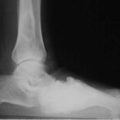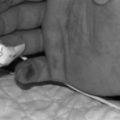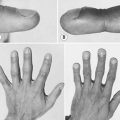52 Sixth cranial nerve palsy
Salient features
Examination
• The eye is deviated medially and there is failure of lateral movement.
• The diplopia is maximal when looking towards the affected side. The two images are parallel and separated in the horizontal plane. The outer image comes from the affected eye and disappears when the eye is covered.
• Proceed by telling the examiner that you would like to check the following:
Advanced-level questions
What are the structures in close proximity to the sixth nerve nucleus and fascicles?
Do you know any eponymous syndromes where the pons is infarcted and consequently the sixth cranial nerve is involved?
• Raymond syndrome: ipsilateral sixth nerve paralysis and contralateral paresis of the extremities
• Millard–Gubler syndrome, in which there is ipsilateral sixth and seventh nerve palsy with contralateral hemiplegia
• Foville syndrome has all the features of Millard–Gubler paralysis with lateral conjugate gaze palsy.
What do you know about Tolosa–Hunt syndrome?
C Gradenigo (1859–1926), an Italian otolaryngologist, described this syndrome in 1904.
E Tolosa, a Spanish neurosurgeon.
WE Hunt, an American neurosurgeon.
ALJ Millard (1830–1915), a French physician.
AM Gubler (1821–1915), Professor of Therapeutics in France.
ALF Foville (1799–1878), Professor of Physiology at Rouen, described his syndrome in 1848.





